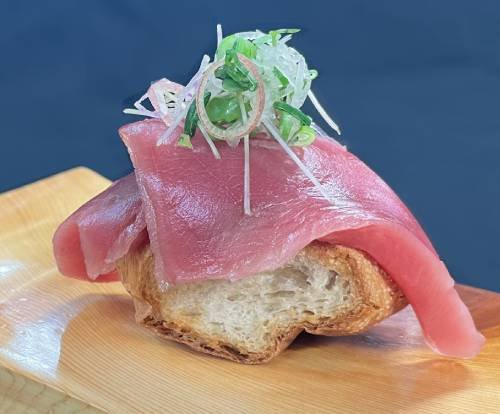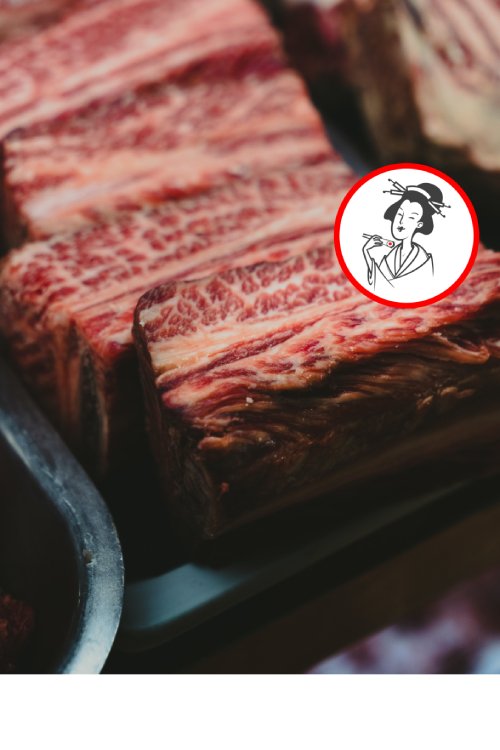What is Omakase?
In this post, you will learn all about Omakase from an authentic Japanese point of view. It also comes with exclusive fun and practical Geisha Tips!, so you can enjoy your next Omakase like an expert. Let’s get going.
“Omakase isn’t just about Sushi”
Nowadays Omakase seems everywhere. Some Omakase, like the one at Masa restaurant in New York City, goes for close to $1,000, while others are more accessible. I haven’t tried Masa yet, so if any of you want to take me there, I would be up for it. The course at these restaurants are not always appetizing, I was stunned to come across this “Bread Sushi” omakase the other day. I honestly don’t know whether we can call this Sushi. What is the difference between this (photo below) and Bruschetta?
Anyways, the biggest misconception people have with Omakase is it is a high-end version of sushi set meal with a few surprise pieces. For example, you can pick $100 or $150 course, and you get a few more pieces for the $150 set. The set is typically comprised of well-known expensive pieces like Toro and Sea urchin, and one or two special pieces like seared Wagyu or a delicious sp*rm sack of Hokkaido cod (Shirako). The course is more or less the same every time you visit. I would say 90% of the people outside of Japan think of Omakase as such, and it is wrong. That is why I am writing this post to demystify it one and for all.

Omakase is not just about Sushi.
The phrase Omakase literally means I leave it up to you. According to Wikipedia, this phrase is is most commonly used when dining at Japanese restaurants where the customer leaves it up to the chef to select and serve seasonal specialities. There is no mention of Sushi here. In fact, we use the term as much, if not more, when we talk of Kaiseki and other Japanese meals.
Omakase is about seasonality.
To illustrate this point, let me tell you a story about Mr. Kenzo, a merchant in Edo period. Mr. Kenzo is from Hokkaido in the north part of Japan and he is moving to Kyushu in the south to join his brother. As you know, Japan is a vertically long island, and the climate is very different depending on the region. To celebrate the reunion, Kenzo takes his brother to a nice sushi restaurant. He tries to order his favorite seafood, like giant scallop, hairy crabs, and last but not least the delicious sperm sac of Hokkaido cod. However, the chef has no clue what they are because these are common in Hokkaido but not in Kyushu. Kenzo keeps trying but ends up having to ask his brother to order, which in is quite an embarrassment. I’m not surprised this is happening. Japan has a total of 3900 types of fish who can remember all that? On top of that there’s meat, vegetables, and each of them have seasonalities. Have you seen this? a tea mug used in a sushi restaurant. There are 50 most common fish on them, and I can’t remember it all, so 3900 is crazy. So to avoid the type of embarrassing situation like the one Mr. Kenzo found himself in, a chef in Japan came up with Omakase to save their clients’ faces.

Now that you know the basics of Omakase. Let me give you a fun and practical Geisha tips! It is highly common for many of sushi and other high-end restaurants in Japan to not have a menu, nor even have price listed on the signboard. Back in the day, restaurants were frequented only by regulars, so this worked ok. These days, it could result in a predatory practice where customers are surprised by the bill at the end of the meal. It is still very rare in Japan, but it is always good to take precautions. Omakase is thus a good way to prevent this unpleasant surprise from happening. I also urge you to check the prices of alcoholic beverages beforehand on the website or online reviews, because that is not part of Omakase and it could easily double your bill, if you’re a drinker. Hope you enjoyed today’s post. Don’t forget to enter your email address below to join the community. I am determined to give you useful information on every single dish and cuisine in Japan.


